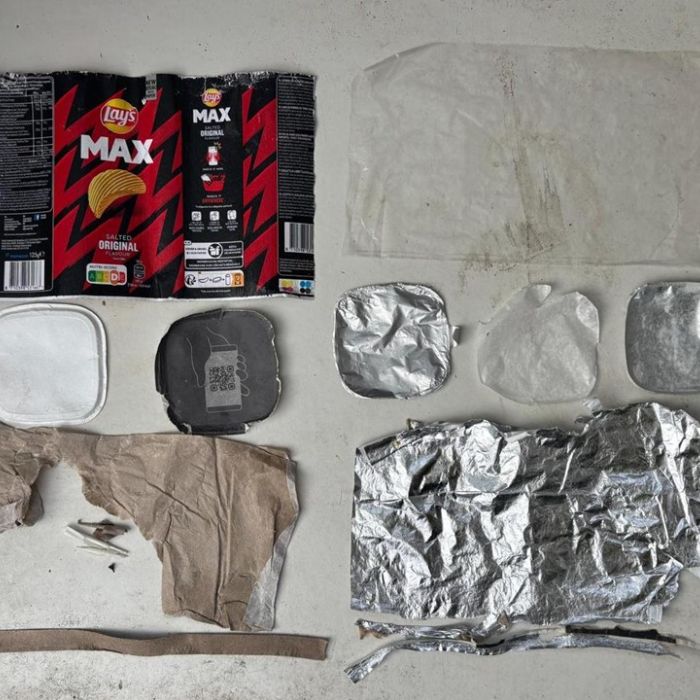Pandora’s silent crisp box

Photo By; Dirk Groot (aka Zwerfinator).
Originally featured on MarketingFacts in Dutch.
Packaging innovation often attracts a lot of attention, especially when it involves something as common as crisps. Lay’s recently introduced a new cardboard box for their crisps, promising fewer broken pieces, re-sealability, and improved sustainability. On their website, they also note an unexpected feature: the packaging is “silent.” Albert Heijn has now introduced a similar concept. On paper, it’s an interesting idea: premium and sustainable. But the reactions from both consumers and experts alike tell a different story.
Lay’s have not shied away from lording their sustainability efforts, making claims about 18,000 quality checks, crop rotation in their potato fields, and vague promises about recyclability. Consumers have usually accepted these claims without question, trusting them simply because they sounded credible and matched what you’d expect from a market leader.
But those who looked closer have uncovered this was mostly about complying with existing regulations, disguising vague claims with feel-good language. Now, the consumer attitude seems to be changing too.
The framing: sustainable and premium at once
The new packaging fits into a broader trend in which brands aim to show they’re making conscious choices. Packaging serves as an easy way to signal this message: it’s visible and easy to link to sustainability claims. The new Lay’s box looks sleek, appears innovative, and the brand has come up with a list of benefits for the consumer. Based on this, Lay’s believed it could charge a premium price.
But it’s precisely within this combination of premium and sustainable that a risk lies. Consumers are becoming more critical. They’re starting to ask: what’s actually better for the environment here? And why am I paying more for fewer crisps in a bigger package?
Lay’s and the broader story of sustainability
Criticism of the new Lay’s box is not the first time the company has come under scrutiny. In a previous article on Marketingfacts, I explored how Lay’s have treated sustainability more as a branding concept than a concrete commitment. The quality checks they mention have nothing to do with sustainability, and crop rotation is a legal requirement and necessary to prevent potato diseases. Whilst Lay’s is quick to hail doing these two things, they do not clearly explain what they aim to achieve or why.
What struck me was: as a market leader, Lay’s gets away with it, simply because people trust the brand and see no reason to question it.
Expert analysis: well-intentioned, but not good enough
Waste expert Dirk Groot (aka Zwerfinator) analysed the new Lay’s packaging and found it consists of 53 grams of cardboard and 11 grams of plastic and aluminium. This is a combination that’s difficult to recycle through standard waste streams, despite the claim that it can be discarded with paper waste. The packaging lacks FSC certification, and the instructions for proper disposal are unclear.
This raises the question: is this truly more sustainable, or just positioned this way?
And what does the consumer think?
The packaging has also raised questions among consumers. On social media and review platforms, the tone is mixed. Some find the box attractive and eye-catching, while others call it overcomplicated, excessive, and confusing. On top of this, the portion of crisps is smaller than in a standard bag, while the price is higher. This has drawn criticism, especially in a time when consumers are becoming more price conscious. The packaging already seems to be losing favour with retailers.
Consumers are voicing complaints on social media. Foodwatch has called it “misleading and deceptive” and Zwerfinator’s breakdown of the box, complete with clear visuals showing the layers of plastic and aluminium, was widely shared. It highlights an important trend: consumers are no longer willing to accept sustainability claims based on superficial imagery alone. They’re better informed, share their findings online, and expect real substance behind brand promises.
What brands can learn from this?
The intention to move towards more sustainable packaging is commendable. Packaging is a visible way to do this, and for many brands, a first step toward sustainability. But this also needs to be genuine.
Transparency around material choices, recyclability, and environmental impact is essential. And equally so is the understanding that sustainability isn’t a standalone message, but an integral part of brand identity. Done well, it’s possible to align sustainability with premium positioning, but this takes more than just a good-looking box.
And above all: from a market leader like Lay’s, more is expected. Not just because of their scale and visibility, but because they have a responsibility to set the standard. They are a leading brand in the crisp industry and this carries weight. If they send confusing or weakly supported sustainability signals, it sets the tone for the rest of the market. But if they do this right — thoroughly, transparently, and credibly — they can truly make a difference. Not just in successful marketing, but in real social impact.
We can help you to optimise your product or service, by offering real feedback from real consumers. Find out more here.
We believe that understanding consumers is key to making the food system more sustainable. Successful innovation and impactful communication require a solid foundation of consumer insight.
We are the insights partner of choice for food companies and non-profits that aim to have a positive impact on society and our planet. Together we empower consumers to make food choices that are good for them as well as for the planet.
The Hague Tech - Waldorpstraat 5 - 2521CA - The Hague
(+31) (0)70 2042314 - Info@futureoffood.institute
Contact
Fill in this form and we'll be in touch shortly!
Newsletter
Do you want to receive a monthly dose of insights, opinions and events? Please subscribe to our newsletter.










